Hens and Chicks Succulent Care: How to Grow These Hardy Rosette Beauties
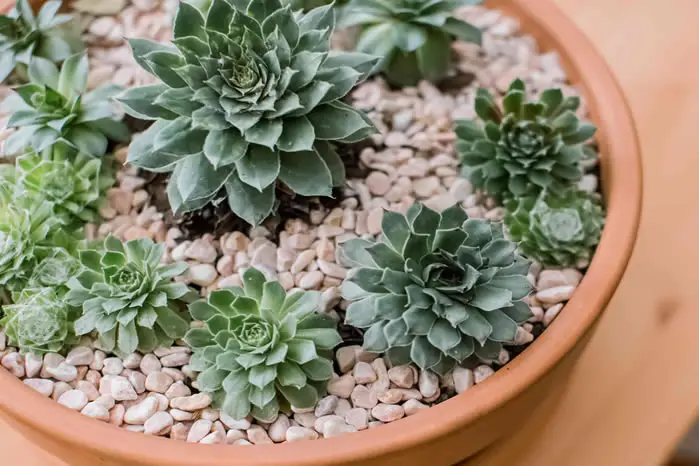
Looking for a no-fuss succulent that’s tough, beautiful, and easy to multiply? Hens and Chicks might be the perfect plant for your home or garden. With their charming rosettes and natural spreading habit, they’re a favorite among beginners and collectors alike. This guide will walk you through everything you need to know to help them thrive.
Table of Contents
What Makes Hens and Chicks Stand Out
Known botanically as Sempervivum, Hens and Chicks are cold-hardy succulents native to southern Europe and parts of North Africa.
The name “Sempervivum” means “always living,” a nod to their resilience and tendency to reproduce freely.
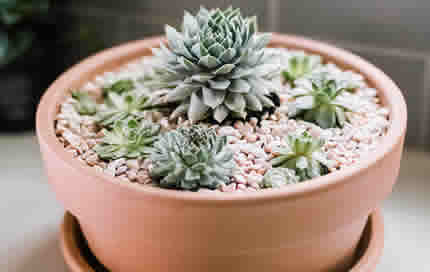
Each plant consists of a main rosette (the “hen”) and smaller offsets (the “chicks”) that surround it in clusters.
They belong to the Crassulaceae family and are often grown in rock gardens, containers, or even cracks in stone walls thanks to their ability to tolerate poor soil and tough conditions.
They’re commonly confused with Echeveria, but Hens and Chicks have thinner leaves and are more tolerant of cold weather.
Light Requirements
These succulents love the sun.
Full sun is ideal for strong rosette formation and vibrant color, especially for red-tinted or purple varieties.
Outdoors, give them at least 6 hours of direct sunlight per day.
Indoors, place them in the brightest window possible—ideally south-facing—or supplement with a grow light.
Too little light will cause the rosettes to stretch and lose their tight form.
Watering Instructions
Like most succulents, Hens and Chicks prefer to dry out completely between waterings.
In spring and summer, water thoroughly when the soil is bone dry.
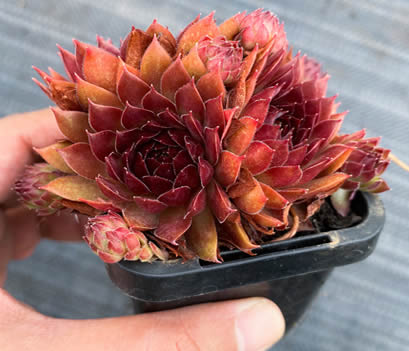
Let any excess water drain away, and never let the pot sit in standing water.
In fall and winter, reduce watering to once every 4–6 weeks or whenever the leaves start to wrinkle slightly.
Overwatering is the most common issue and often leads to root rot.
Soil and Potting
Well-draining soil is a must.
Use a gritty cactus or succulent mix, or combine regular potting soil with sand and perlite in a 1:1:1 ratio.
Terracotta pots are ideal because they breathe and help dry the soil faster.
Always use a pot with a drainage hole.
Outdoors, they can be planted directly in gravelly or rocky soil, where they’ll spread and thrive with little intervention.
Fertilizer
These plants aren’t heavy feeders, but a light boost can improve growth during the active season.
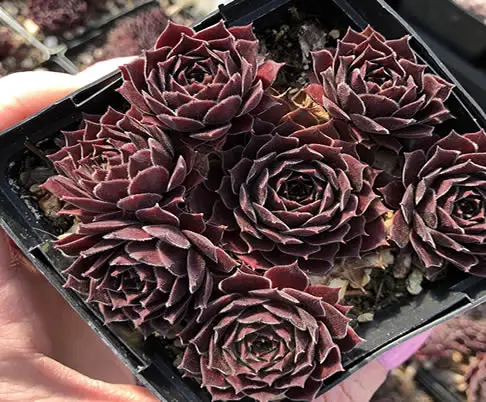
Use a diluted, low-nitrogen cactus or succulent fertilizer with an NPK ratio such as 2-7-7 like this one or 1-3-2 like this (it is a 10-20-30 but it is the same as 1-3-2 as the balance of nutrients are the same).
Feed once in early spring and again in midsummer, but skip fertilizer entirely during fall and winter.
Avoid high-nitrogen formulas, as they can cause weak or overly lush growth.
Pruning and Maintenance
There’s not much pruning required, but removing dead leaves and spent flower stalks will help keep the plant tidy.
Hens and Chicks are monocarpic, meaning each “hen” will die after flowering—but don’t worry, it leaves plenty of chicks behind.
Remove any dried or decaying rosettes and allow new offsets to fill in the space naturally.
If things start to get crowded, you can thin them out or replant chicks elsewhere.
You can also easily propagate these succulents as we outlined in the article How to Propagate Hens and Chicks (Sempervivum): A Simple Guide for Beginners.
Best Spot in the Home
These succulents do best in bright, dry locations.
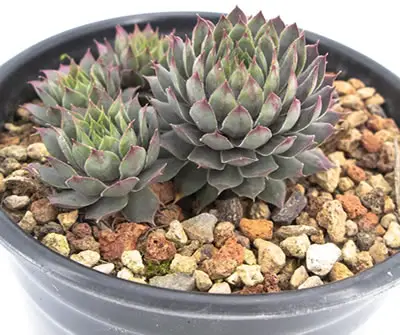
Place them on sunny windowsills, plant stands near south- or west-facing windows, or shallow bowls in your brightest room.
They’re a fun addition to indoor succulent arrangements and make great centerpiece plants for kitchen or dining tables.
Avoid bathrooms or humid spaces.
Outdoor Care
Sempervivum is incredibly hardy and thrives outdoors in USDA zones 3–8.
They can tolerate frost, snow, and heat—as long as the soil drains well.
Plant them in rock gardens, outdoor containers, wall crevices, or gravel beds with full sun exposure.
Avoid planting them where water collects after rain.
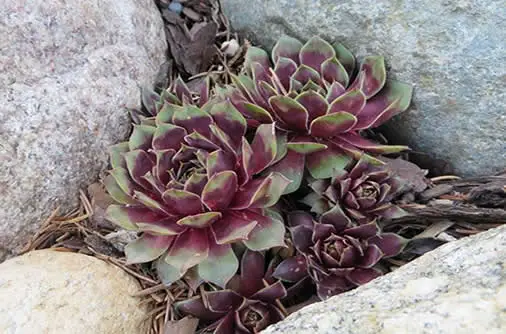
In especially wet climates, a raised bed or sandy border is ideal.
These plants spread naturally outdoors and often form large mats over time.
Common Problems and How to Fix Them
Rotting at the base: Usually from too much water or poor drainage. Remove affected plants and improve airflow and soil mix.
Elongated rosettes (etiolation): Caused by low light. Move to a sunnier spot or use a grow light.
Dry, crispy leaf tips: Could be a result of intense sun exposure without enough water. Adjust watering slightly during hot spells.
Hen dying after blooming: This is normal! Just remove the spent hen and let the chicks take over.
Aphids or mealybugs: Rare but possible. Remove them with a cotton swab dipped in rubbing alcohol or use insecticidal soap.
Popular Varieties of Hens and Chicks
There are hundreds of Sempervivum cultivars, but here are a few favorites:
-
Sempervivum ‘Red Rubin’ – Bold red tones in cooler weather and tight rosette formation.
-
Sempervivum ‘Cobweb’ – Covered in fine white threads that look like spider silk.
-
Sempervivum tectorum – Classic species with green rosettes and pinkish tips.
-
Sempervivum arachnoideum – Another cobweb type with dramatic, symmetrical webbing.
-
Sempervivum ‘Pacific Blue Ice’ – Icy blue tones with pink edges.
-
Sempervivum ‘Black’ – Deep burgundy to nearly black rosettes, striking in contrast groupings.
-
Sempervivum ‘Oddity’ – Twisted, tubular leaves that give a sculptural look.
These all follow the same care routine, so once you learn the basics, you can collect endlessly.
Final Thoughts
Hens and Chicks are a classic for good reason: they’re hardy, beautiful, and practically take care of themselves.
Whether you’re growing them indoors in a sunny room or outdoors in rocky soil, their reliable nature and rapid spreading make them a delight to grow.
And with so many colors, shapes, and textures available, it’s easy to see why so many plant lovers become hooked on collecting them.
Thanks for reading! I'm Michael — houseplant fanatic and your Pinterest plant guide.
Follow me on Pinterest for fresh updates 🌿



